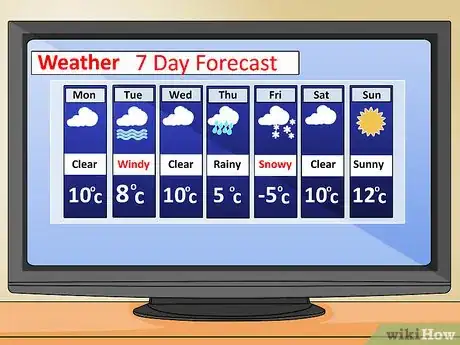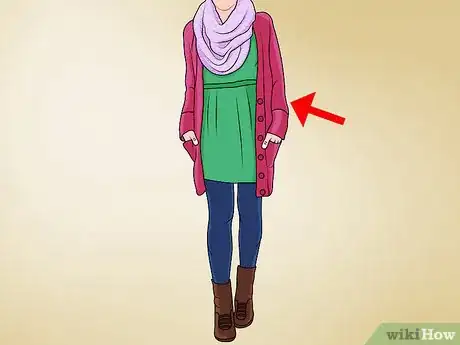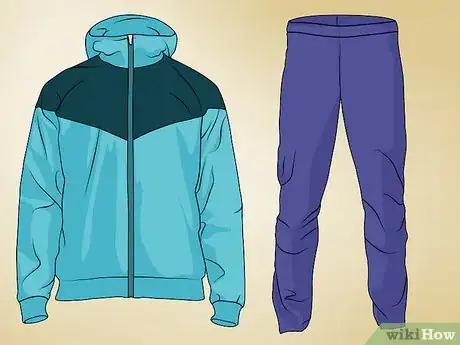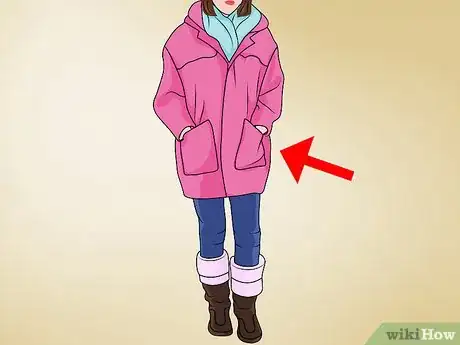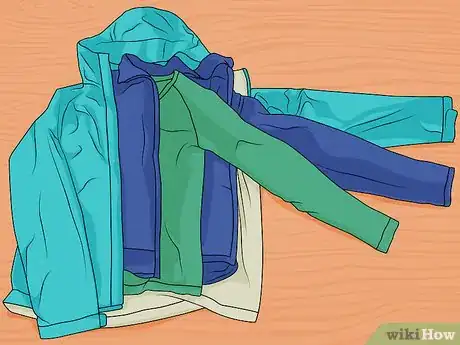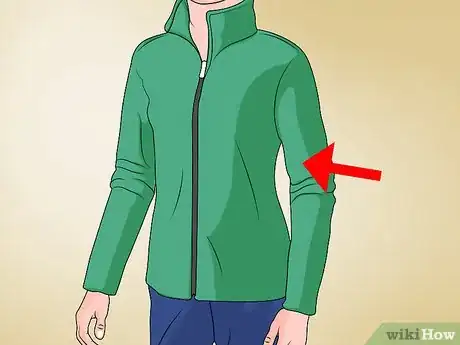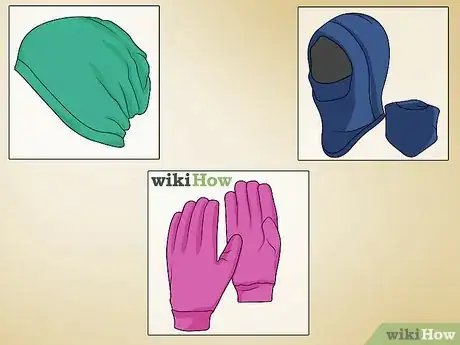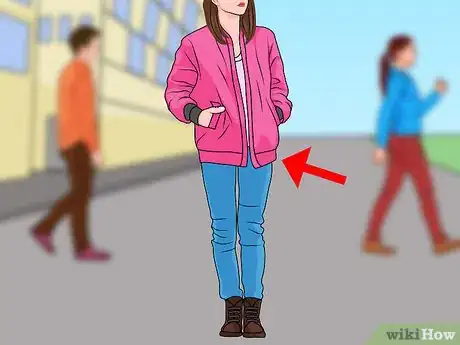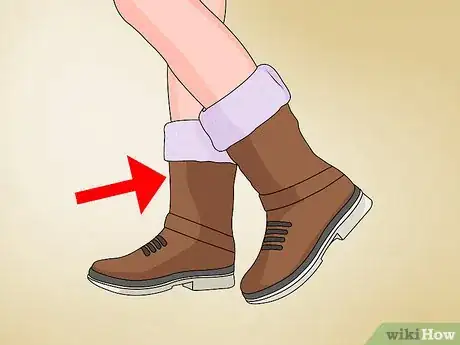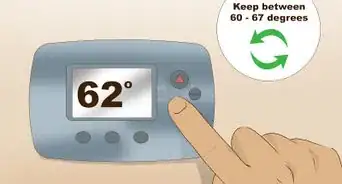This article was co-authored by Paul Julch, MA. Paul Julch is a Personal Wardrobe Stylist, Speaker, and the founder of Urbanite | Suburbanite, a wardrobe styling business in the San Francisco Bay Area. With over 25 years in the fashion industry, Paul works with clients to make getting dressed easier, less time consuming, and more enjoyable. Paul has years of experience in retail visual merchandising - styling windows, displays, and floor sets for Banana Republic, Gap, and Express. He also has experience styling fashion photo shoots and corporate videos. Paul holds a BS Degree in Management from State University of New York at Binghamton, an MA in Clinical Psychology from Long Island University. He also studied Interior Design at the University of California, Berkeley.
This article has been viewed 27,083 times.
When embarking on a holiday to the northern polar regions, it is important to know what to wear, as the Arctic climate can be bitterly cold. There are many reasons why people choose to enjoy a break in the Arctic, from the attraction of the Northern Lights, to the thrill of winter snow adventures. In winter, temperatures drop dramatically, and clothes must be chosen accordingly. If you are travelling to witness the glorious Aurora Borealis, you will be looking to travel between September and March, when temperatures in the Arctic are on average below –20ºC. It is essential to pack weather-appropriate clothing so that any activity you wish to enjoy during a holiday in the Arctic is not marred by the cold.
Steps
Thinking of the Basics
-
1Check the weather of the exact part of the Arctic you're headed for. The Arctic covers a lot of ground, for example upper Finland, Russia and the North Pole. Look for weather forecasts from the internet or TV to see if it's going to windy, snowy or both. Even if the forecast says it will be one sort of weather though, prepare for the whole range of possibilities, as the weather changes quickly in this region.
-
2Set aside the fashion statement. The important thing in dressing warmly is that you are warm and fashion isn't the issue.Advertisement
-
3Understand that the best clothes for cold weather in general are wind resistant, warm and won't let snow or anything else inside.
-
4Keep an open mind about the appearance of clothing. Some of the clothing may not be the most fashionable but be the warmest and most comfortable for the climate you are going to. That is the key to being toasty warm when in the Arctic.
Preparing Your Clothing
-
1Dress in layers. When wearing multiple layers of clothing, warm air becomes trapped between each separate item. It is imperative to select the layers carefully to fully maximise the heat and to achieve constant comfort.
- To dress up fashionably for cold weather, avoid a lot of puffy layers.
- It is to start with layering lighter weight layers and work to the heavy layers as you go out.
- You can wear coats and jackets of different colors. Choose to wear printed outfits.
-
2Add the first layer. The first item garment should be fitted as close to the skin as possible for mobility and to take away excess perspiration as required. You can purchase base layer tops and bottoms that are specifically made to capture and release such fluids and are also coated with an anti-bacterial substance that will stop clothes from emitting odours.
- You may find that a t-shirt plus a long-sleeved t-shirt make the best first layer.
- Merino wool tops make for a good initial layer, as these are wool and the latest iterations of this fabric are usually non-itchy. The wool is warm and helps prevent sweating.
- A thermal t-shirt is a good idea under a long-sleeved merino top.
-
3Add the second layer. This should consist of a thick jumper or fleece, or an insulated jacket. You will find that zipped or buttoned clothes are excellent for the mid layer as they provide much needed ventilation after exerting activities. Trousers made from breathable materials are best for the second layer of clothing so air can travel around freely.
-
4Add the final layer. This layer is the one that is exposed to the elements, so as well as providing warmth, it needs to be made of protective materials. A windproof, all-in-one with a hood is the perfect option, although separates can be just as effective.
-
5Test the clothes in the shop for comfort and good fit. Ask questions. For example, if the clothing doesn't explain on the description what level of wind it protects against, for example, then ask the retailer for more information or check the manufacturer's website. If you can't find the needed details, keep looking for those items of clothing that are clearly explained; you don't want any errors when dressing for maximum warmth.
-
6Choose a hat, a scarf, gloves and socks as well. Each item should be rated for the coldest environment.
- It is often best to wear thinner gloves with thicker mittens over the top, for the greatest warmth.
- A balaclava is ideal for the face, or a ski mask.
- The scarf should stay on without having to tie it, to avoid undoing and blowing away in severe winds; an infinity scarf is a good option.
- For the hat, choose something that covers the ears and forehead and will fit under the jacket's hood.
-
7Check what the locals are wearing, on arrival. You may find it useful to purchase an item when you arrive in a town if you see many people wearing the same jacket for winter, it's usually the warm one!
Warnings
- Keep the receipt of each purchase. If the item has something wrong or doesn't fill the requirements, return the item.⧼thumbs_response⧽
Things You'll Need
- Layers of clothing
- Footwear
